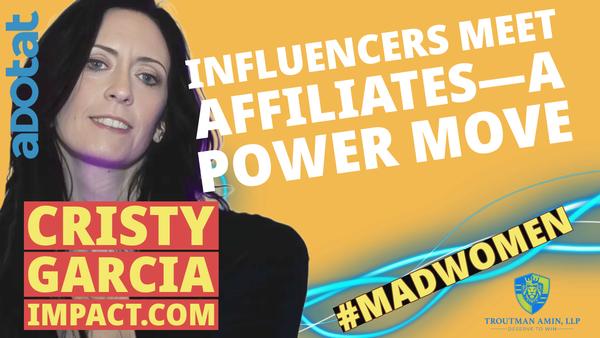Let’s get this straight: PAAPI (Publisher Advertising and Audience Program Integration) is Google’s latest attempt to wrap the ad industry in a shiny package while quietly tightening its grip on the ecosystem. It’s like they’re selling you a gift-wrapped box of cookies, but you open it to find smelly crumbs and a note saying, “Trust us, it’s delicious!”
The buzz
about PAAPI isn’t because it’s revolutionary—it’s because Google’s Privacy Sandbox, the parent of this questionable creation, is being sold as the savior of online advertising in a post-cookie world. Cue the orchestra—this is the part where adtech influencers, some with suspiciously sunny vacations, cheer wildly for Google’s altruism. (Spoiler alert: They’re not clapping for free.)
Privacy Sandbox: The Emperor’s New Tech
Google’s Privacy Sandbox
is pitched as a kinder, gentler way to keep personalized ads alive while giving third-party cookies the boot. It’s got the air of a public service announcement, complete with pastel-colored graphics and buzzwords like “privacy-preserving,” but don’t be fooled. The centerpiece, PAAPI (Protected Audience API), groups users into interest-based cohorts instead of tracking them individually. Sounds noble, right? But let’s not kid ourselves: it’s like handing over your house keys to a
burglar because they promised to clean up after themselves. And when that burglar happens to own most of the neighborhood, you’re not exactly in a position to negotiate.
As David Kohl, Co-Founder & CEO of Symitri, puts it:
“PAAPI is a black box that magically assigns browsers to interest groups … PAAPI is for targeting. If you want measurement, you need to implement additional Google-created components that are all
part of Privacy Sandbox.”
Let’s break that down. PAAPI is a targeting tool masquerading as a privacy solution. It’s designed to assign browsers to interest groups based on behavioral data that Google promises won’t track individuals. But here’s the kicker: you have no idea how these groups are formed, what data is being used, or why your audience might suddenly vanish into thin air. It’s trust us on steroids, and advertisers are just
expected to nod along like this is all perfectly fine. Spoiler alert: it’s not.
PAAPI: The Black Box Dilemma
The term black box gets thrown around a lot in tech, but in PAAPI’s case, it’s disturbingly accurate. Imagine a system where the inputs (your audience data) and outputs (your ad targeting) are completely hidden from you, controlled exclusively by Google. That’s PAAPI. It’s like being handed a car where only the manufacturer knows how to start
it, steer it, or repair it. And when the check engine light comes on? Guess who you’ll need to call.
Advertisers don’t just lose transparency; they lose autonomy. As Kohl rightly points out, PAAPI doesn’t exist in a vacuum. It’s part of the larger Privacy Sandbox ecosystem, which requires you to adopt additional Google-created components to measure performance. This isn’t just about buying a tool; it’s about buying into Google’s entire ecosystem.
And once you’re in, getting out is about as easy as canceling a gym membership in January.
Privacy or Power Play?
Google loves to wrap PAAPI in the warm glow of privacy advocacy, but let’s be real: this isn’t about protecting users. It’s about maintaining dominance in a post-cookie world. Other browsers like Safari and Firefox simply eliminated third-party cookies and let advertisers figure it out. Google, on the other hand, built a “solution” that
conveniently ensures its own relevance.
Sure, PAAPI removes the creepy one-to-one tracking we’ve all come to loathe, but it replaces it with something arguably worse: cohort tracking that consolidates even more power within Google’s ecosystem. It’s like banning sugar in schools but replacing it with artificial sweeteners that you conveniently own the patent for.
The Devil in the Details
The real problem with PAAPI isn’t just the lack of transparency; it’s the complete absence of control for advertisers and publishers. Consider these key issues:
1. Arbitrary Cohorts
Google determines how users are grouped into cohorts, but the criteria are opaque. Are they using browsing history? Purchase behavior? Cat videos? Nobody knows, and Google isn’t telling. This lack of clarity leaves advertisers guessing—and
often losing.
2. Ephemeral Data
Cohorts don’t stick around forever. They’re refreshed every 30 days, meaning advertisers can’t rely on long-term targeting strategies. It’s like trying to build a castle in the sand while the tide rolls in every few weeks.
3. Dependency on Google’s Ecosystem
Want to measure your campaign’s success? You’ll need Google’s Attribution Reporting API,
another Privacy Sandbox tool. Want more granular targeting? Google’s Topics API is your only option. It’s an endless cycle of dependency, designed to ensure that every dollar you spend flows through Google’s tollbooth.
Monopoly 101: How Google Wins Every Time
If you’re thinking PAAPI sounds like yet another Google power play, congratulations, you’ve cracked the code. Privacy Sandbox isn’t just about privacy—it’s about locking
publishers and advertisers into Google’s walled garden tighter than a snug pair of Spanx.
1. Integrated Dependency
To use PAAPI effectively, you’ll need a suite of Google toys. It’s like buying a car and realizing you can only refuel at Google-branded gas stations. Kohl spells out the problem:
“The open Internet deserves an independent approach … PAAPI and other Google technologies are
brought to you by the same company that eats publisher revenues for lunch.”
Google’s ecosystem isn’t just a garden—it’s a fortress. Stray outside, and you’ll be hit with reduced visibility and revenue losses.
2. Opaque Metrics
PAAPI promises insights but delivers riddles. Imagine getting a weather report that says, “It’s sunny somewhere.” Google controls what you see, inflates metrics, and
makes it nearly impossible to gauge actual performance.
3. Market Exclusivity
Once you’re in, good luck getting out. Competing platforms become afterthoughts, as Google’s PAAPI becomes the only game in town. And when they control the rules of the game, you can bet the house always wins.
Why the Reporting Sucks
Let’s talk about reporting, or as Google seems to call it, the art of turning clear metrics
into a Jackson Pollock painting—abstract, messy, and open to wildly different interpretations. Advertisers who dive into PAAPI’s reports looking for clarity are left with more questions than answers, and the only certainty is that Google is the one holding all the cards.
Here’s how PAAPI transforms what should be actionable insights into a masterclass in obfuscation:
Aggregated Data: The “Trust Us, It’s Fine” Problem
PAAPI loves aggregated data the way reality TV loves drama—it’s messy, vague, and designed to keep you hooked without giving you anything meaningful. Instead of breaking down performance at a granular level, PAAPI serves up a broad, oversimplified view that’s as helpful as getting directions that say, “Just head north for a while.”
Want to know which placements are driving results? Too bad. Need insights on which cohorts actually
convert? Good luck. It’s like being handed a blurry painting and being told it’s a masterpiece. Sure, it might look fine from 20 feet away, but up close, it’s just a chaotic mess of smudges.
The lack of granularity isn’t just annoying—it’s a massive problem. Without knowing which tactics are working, advertisers are stuck guessing. And guess what? Most guesses end with more dollars funneled into Google’s ecosystem because, well, where else are you going to
go?
Over-Attribution: Google’s Victory Lap
If PAAPI’s reporting had a tagline, it would be: “All roads lead to Google.” That’s because Google’s infamous last-click attribution model takes credit for conversions like a reality star claiming they invented the concept of drama. It doesn’t matter how many touchpoints a customer interacted with before converting—if Google was the last one, it’s popping the champagne and taking a
victory lap.
It’s like the kid in the group project who skips every meeting, shows up on presentation day, and somehow gets the highest praise. Meanwhile, all the other channels—organic search, social media, email campaigns—are left standing in the corner, quietly grumbling about fairness.
This isn’t just irritating; it’s deceptive. By over-crediting its own channels, Google skews advertisers’ perceptions, making its ecosystem look
like the golden goose. The result? Advertisers double down on Google, even when other strategies might be more effective.
Metrics Inflation: A Comedy of Impressions
Let’s talk about impressions. PAAPI counts them with the enthusiasm of a kid counting Halloween candy, but here’s the catch: not all impressions are created equal. Did a human actually see the ad? Who knows! Did the user scroll past in a microsecond? Probably. Was it a bot
pretending to be a human? Don’t ask.
Google’s definition of an “impression” seems to be, “If it exists in the ether, it counts.” This leaves advertisers paying for what I like to call digital tumbleweeds—those fleeting, meaningless moments that add zero value to your campaign but still get a spot on the invoice.
It’s the equivalent of charging you for a sandwich you only looked at through a shop window. Sure,
the sandwich was technically there, but did you eat it? Nope. Did it satisfy your hunger? Definitely not.
The Latency Problem
Oh, and let’s not forget the latency debacle. PAAPI is a resource hog, slowing page loads to a crawl, especially on mobile devices. For users, it’s like waiting in line at the DMV: frustrating, slow, and likely to make you want to quit halfway through.
The Legal Storm Clouds
Regulators in the EU and US are already sharpening their knives. The UK’s CMA is sniffing around Privacy Sandbox like a watchdog that smells a monopoly sandwich. The verdict? Google isn’t just innovating; it’s building walls to keep competition out.
- Anti-Competitive Practices: Publishers who don’t play ball with Google’s rules face reduced ad visibility and revenues. It’s the tech equivalent of mob-style “protection fees.”
- Data Privacy
Concerns: Critics argue PAAPI skirts GDPR rules by making user consent about as clear as a mud puddle.
The Reality: Dependency Dressed as Progress
Here’s the rub: PAAPI isn’t solving privacy—it’s creating dependence, and the sooner we all admit it, the better. Google’s playbook is painfully transparent to anyone paying attention. They’ve taken the idea of privacy, spun it into a shiny marketing narrative, and used it to
construct a system where everyone—advertisers, publishers, and even users—ends up tethered to their ecosystem. It’s not progress; it’s a gilded cage.
David Kohl, Co-Founder & CEO of Symitri, doesn’t mince words:
“The absence of integrated measurement combined with dismal scale makes it almost a foregone conclusion that these measured results will be so … well … unmeasurable.”
Think about what that means. PAAPI doesn’t just lack transparency—it deliberately obscures the very metrics advertisers rely on to measure success. Instead of delivering actionable insights, it provides a smokescreen of aggregated data that leaves you guessing. And guess who holds all the answers? That’s right—Google.
It’s like being handed a car with a locked hood. You can drive it, but if anything goes wrong, only the manufacturer can fix it—and they’ll
charge you a fortune for the privilege.
A Lifetime Subscription to Google
Once you’re in the PAAPI ecosystem, getting out isn’t just hard—it’s practically impossible. Google has designed Privacy Sandbox as an all-encompassing suite of tools, each one tightly integrated with the others. Want to target cohorts? You’ll need PAAPI. Want to measure conversions? Better grab the Attribution Reporting API. Need to understand
your audience? Add Topics API to your cart.
And that’s the catch: every solution Google offers ties you deeper into their ecosystem. It’s not just about solving today’s challenges; it’s about ensuring you’ll need them for every challenge in the future.
Here’s the real kicker: there’s no off-ramp. Unlike traditional tools where you can switch providers or adopt new strategies, Privacy Sandbox locks you in. It’s the
tech equivalent of signing up for a lifetime gym membership—with no option to cancel, even if the gym decides to replace the treadmills with hamster wheels.
Monopoly Disguised as Progress
Let’s be clear: PAAPI isn’t about democratizing ad tech or leveling the playing field. It’s about consolidating Google’s dominance in a post-cookie world. They’ve positioned themselves as the gatekeepers of privacy, but their real goal is to control
every aspect of the advertising supply chain.
Here’s how it plays out:
Dependency by Design
Every component of Privacy Sandbox is designed to work seamlessly with Google’s existing infrastructure—and awkwardly, if at all, with third-party tools. It’s like a puzzle where only Google has the missing pieces, forcing you to come back to them every time.
Control Over
Data
By eliminating third-party cookies and replacing them with their own proprietary solutions, Google controls the flow of data. They decide who gets access, how it’s used, and at what cost. This isn’t privacy—it’s a power grab.
Limited Alternatives
Competitors can’t replicate what Google is doing because they don’t have the same reach or resources. The result? Advertisers and publishers are left with little choice but to play by
Google’s rules.
The Open Internet Deserves Better
As clever as PAAPI, TOPICS, and other Google technologies might seem, they’re brought to you, as David points out, by the same company that controls 40% of programmatic ad spend. The ad industry deserves transparency, independence, and innovation—not a gilded cage.
So the next time someone pitches PAAPI as the future of privacy, ask yourself: Is this the revolution we
need, or just Google tightening its chokehold on the open web?
Stay bold, stay curious, and always know more than you did yesterday.
CHAT ABOUT THIS ON LINKEDIN














